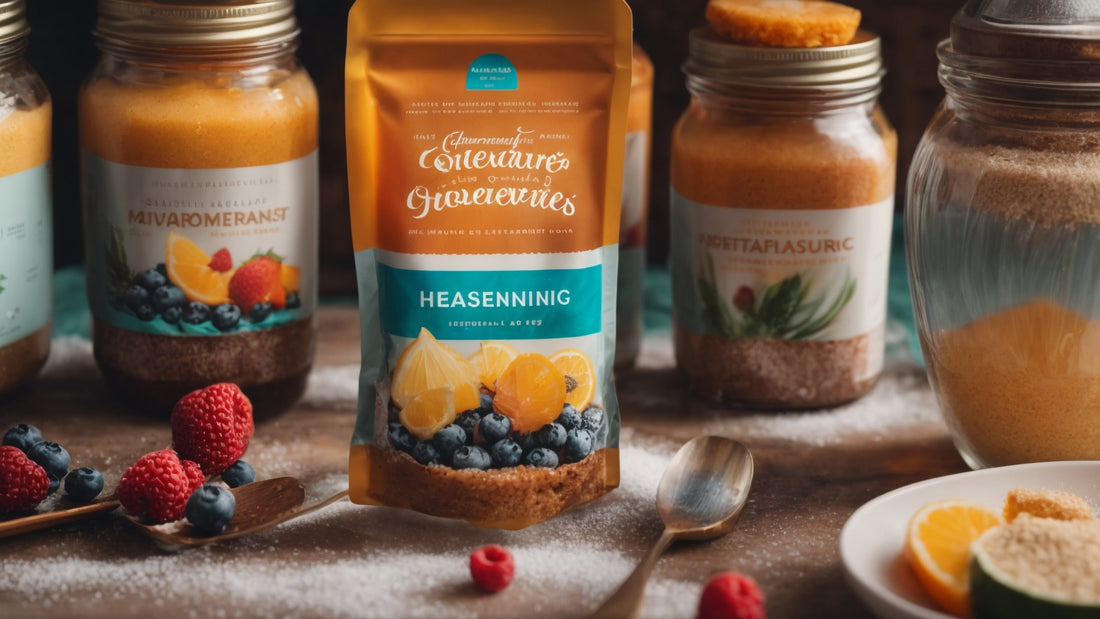**How to Substitute Sweeteners?**
Imagine this scenario: you have a dessert recipe that calls for a sweetener you don't particularly like or don't have on hand, but you're eager to make the dessert. What do you do? It's simple: you substitute! However, when substituting, it's essential to consider its sweetness and whether it's dry or liquid.
The first important factor is sweetness level (sweetness coefficient). Each sweetener has its own level of sweetness, and failing to adjust the quantity based on this level can result in a dessert that's either not sweet enough or overly sweet.
Understanding sweetness is crucial, but it's not enough. You can't always replace a dry sweetener with a liquid one, or vice versa, without considering the chemical properties of the ingredients. Not all recipes allow for a simple sweetener swap without adjusting the recipe.
For instance, coconut sugar will color cream and add extra flavor, which may not be suitable for all desserts. When replacing a dry sweetener with syrup in a biscuit recipe, you must consider the balance between liquid and dry ingredients and monitor the consistency of the batter. In this case, you may need to adjust the quantity of dry ingredients or liquids accordingly.
Choose your favorite sweeteners wisely and use them skillfully in your recipes!
**Exploring Glycemic Index (GI) and Sweetness Coefficient**
Every sweetener has a glycemic index (GI), which indicates how quickly carbohydrates are absorbed by the body and raise blood sugar levels. Low GI sweeteners are especially important for diabetics. Additionally, each sweetener has a sweetness coefficient, indicating its sweetness relative to regular sugar. Adjusting the quantity based on this coefficient ensures the desired level of sweetness in your desserts.
**Considering Color**
If preserving light shades in creams and biscuits is important to you, opt for light sweeteners like grape sugar, xylitol, or erythritol, as they won't darken the final product. However, if you prefer using dark sweeteners like coconut sugar, be aware that it will result in a darker hue for your cream or biscuit.
**Substitution Tips**
In most cases, you can substitute a dry sweetener for another dry one (or liquid for liquid). However, it's crucial to consider the sweetness coefficient of the new sweetener. If you decide to substitute with a sweetener that's either sweeter or less sweet than the original, adjust the quantity accordingly and compensate for any changes in consistency by adjusting other dry or liquid ingredients.
What to look for when buying sweeteners: Look for pure stevia extracts without added fillers or artificial ingredients. Avoid stevia blends with added sugars
When buying sweeteners, always consider factors like the level of processing, added ingredients, and potential health benefits. Opt for natural, unrefined options when possible and be mindful of any allergies or dietary restrictions.
**Exploring Major Liquid Sweeteners**
Liquid sweeteners offer a versatile alternative to traditional sugar, each with its own unique characteristics and applications in baking. Below are the most common ones that are widely used in baking and that are easily accessible in the market:
-
**Conclusion**
With the knowledge gained from this comprehensive guide, you're well-equipped to embark on your sweetener journey with confidence. Whether you're baking for health-conscious individuals, managing diabetes, or simply exploring new culinary horizons, the world of sweeteners offers endless possibilities for creating delectable treats without the guilt. So go ahead, experiment with different sweeteners, and let your creativity flourish in the kitchen!
Remember, the key to mastering sweeteners lies in understanding their unique properties and learning how to harness them to elevate your baking to new heights. Happy baking!


 - **Coconut Sugar:** With a GI of 35 units and a brown color, coconut sugar adds richness to chocolate or caramel-flavored desserts.
- **Coconut Sugar:** With a GI of 35 units and a brown color, coconut sugar adds richness to chocolate or caramel-flavored desserts.








